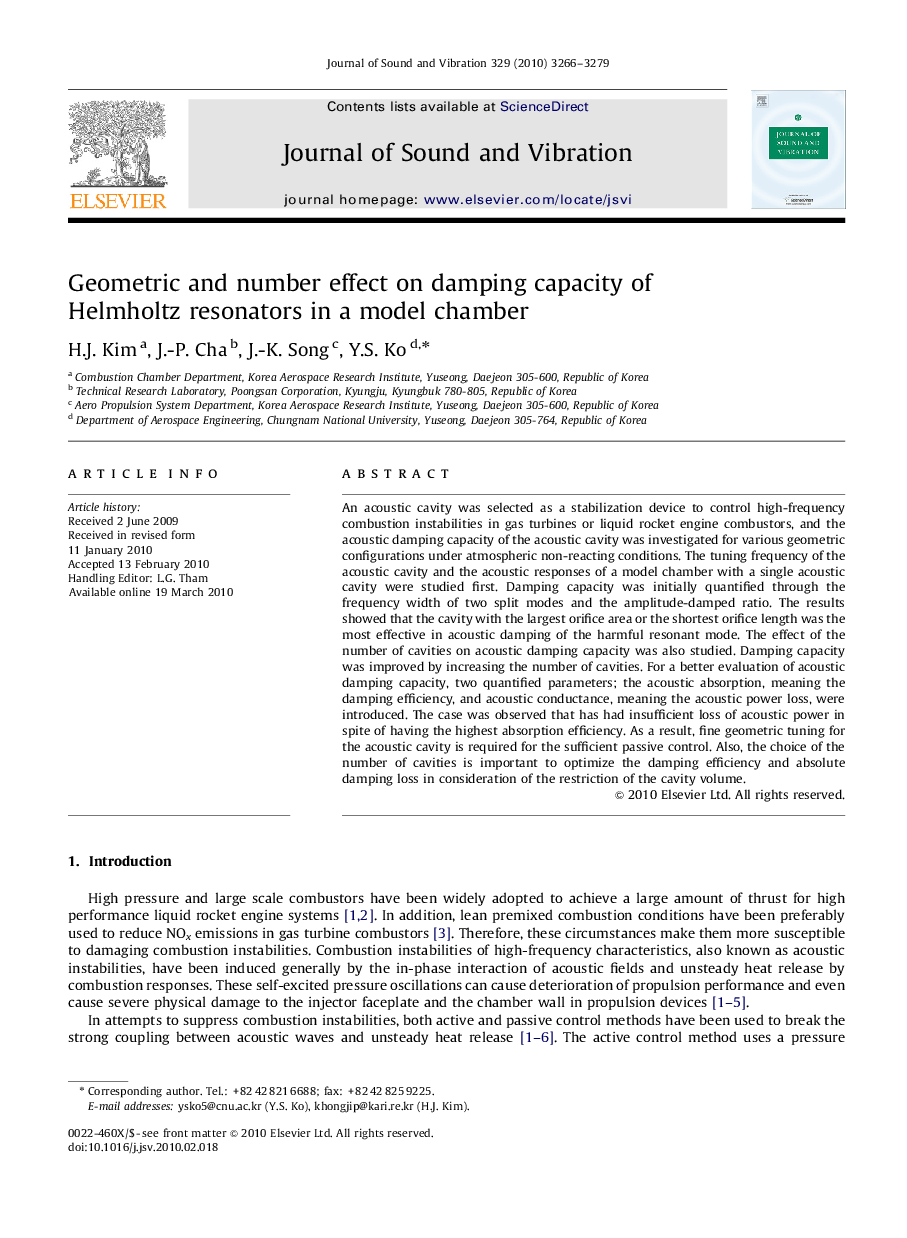| Article ID | Journal | Published Year | Pages | File Type |
|---|---|---|---|---|
| 289291 | Journal of Sound and Vibration | 2010 | 14 Pages |
An acoustic cavity was selected as a stabilization device to control high-frequency combustion instabilities in gas turbines or liquid rocket engine combustors, and the acoustic damping capacity of the acoustic cavity was investigated for various geometric configurations under atmospheric non-reacting conditions. The tuning frequency of the acoustic cavity and the acoustic responses of a model chamber with a single acoustic cavity were studied first. Damping capacity was initially quantified through the frequency width of two split modes and the amplitude-damped ratio. The results showed that the cavity with the largest orifice area or the shortest orifice length was the most effective in acoustic damping of the harmful resonant mode. The effect of the number of cavities on acoustic damping capacity was also studied. Damping capacity was improved by increasing the number of cavities. For a better evaluation of acoustic damping capacity, two quantified parameters; the acoustic absorption, meaning the damping efficiency, and acoustic conductance, meaning the acoustic power loss, were introduced. The case was observed that has had insufficient loss of acoustic power in spite of having the highest absorption efficiency. As a result, fine geometric tuning for the acoustic cavity is required for the sufficient passive control. Also, the choice of the number of cavities is important to optimize the damping efficiency and absolute damping loss in consideration of the restriction of the cavity volume.
